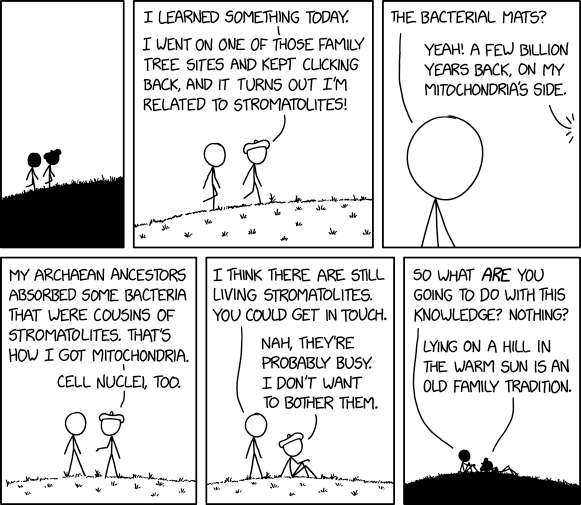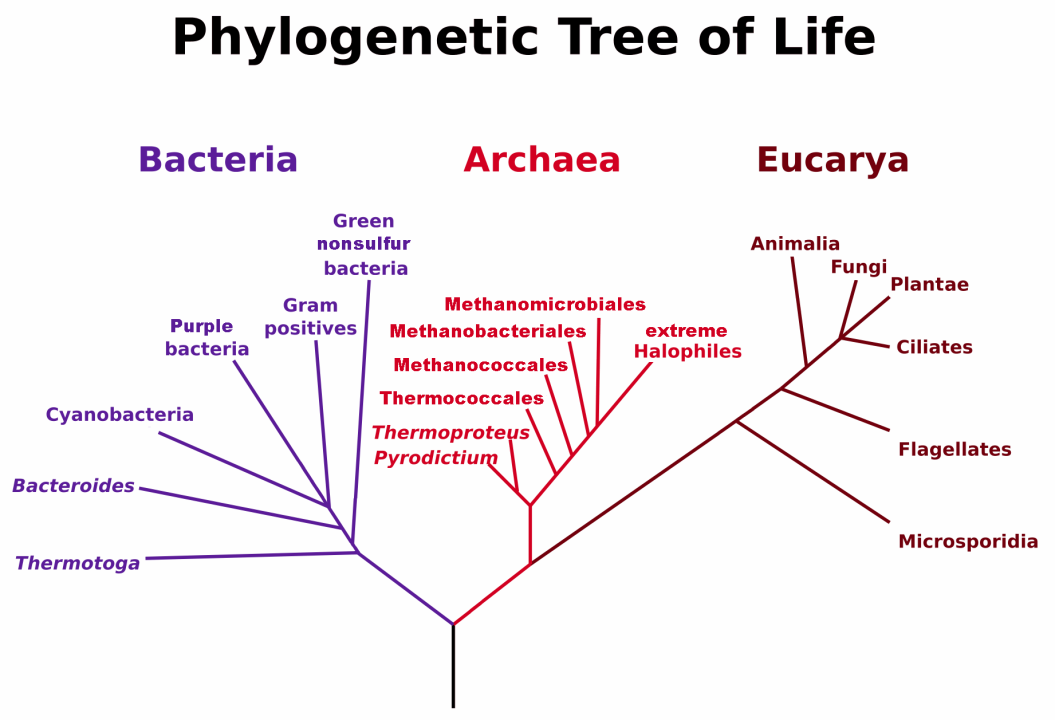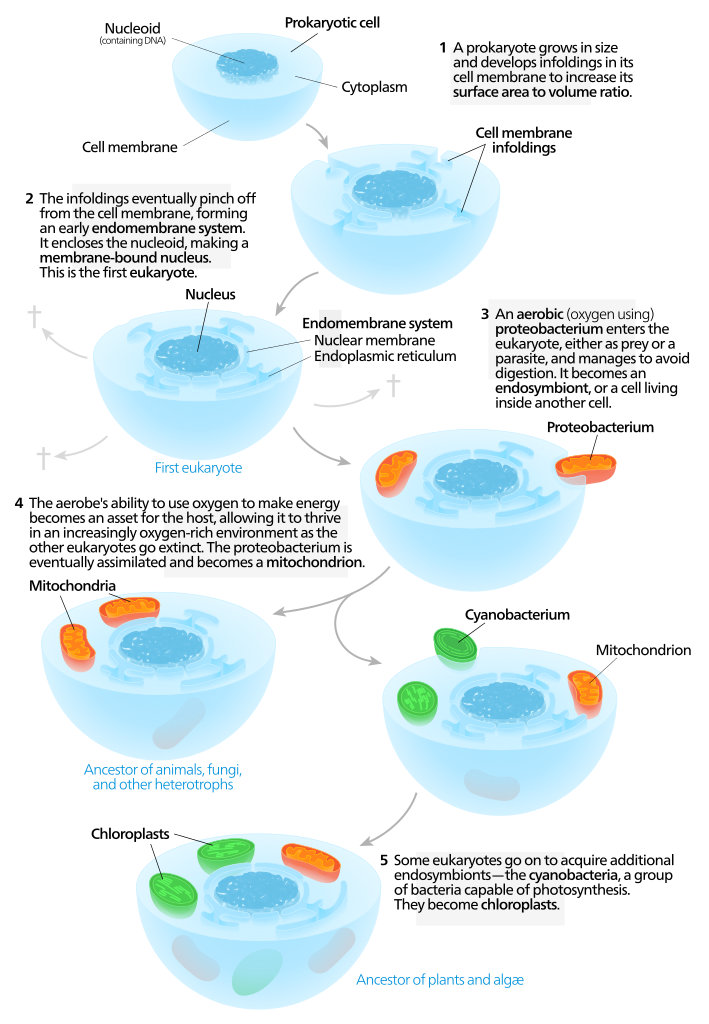The xkcd Stromatolites Comic
The latest xkcd comic is this one on stromatolites:

(This work is licensed under a Creative Commons Attribution-NonCommercial 2.5 License.
I had plans to write about lithotrophs (the microbial ‘rock-eaters’), but couldn’t believe the timing of this comic entering my universe, so decided to make this today’s post instead!
The reason I’m wanting to write about this, is because I’ve touched on the very things mentioned in (most) of these panels elsewhere.
Allow me to explain this comic:
The second panel is a reference to modern phylogenetic analysis*, pioneered by the microbiologist Carl Woese beginning in the 1960s. He, along with George E. Fox also discovered the third kingdom of life, the Archaea, via phylogenetic analysis. Archaea until then had been classifed as bacteria. Bacteria are now their own kingdom, and the Eucarya (animals and plants) are the third.
Thus this second panel is simply saying that if you go back far enough, you will have common ancestry with stromatolites, amongst the first life on Earth, appearing around 3.5 billion years ago.

Attribution: Maulucioni, CC BY-SA 3.0 , via Wikimedia Commons
The reference to mitochondria in the third panel cracked me up! There’s a double joke here. You immediately think “on my mother’s side” because of the ‘m’ — well I did! But what’s funny about this is that our mitochondria do come from only our mothers. And they have their own DNA to boot (written mtDNA).
We inherit our mothers’ mitochondria via the ovum we developed from — a sperm’s mitochondria are between its head and tail, and only the head (with nucleus) enters the egg’s cytoplasm to fuse with the egg’s nucleus and fertilise it.
Much knowledge of our ancestry comes from the study of evolutionary changes to mitochondria through maternal lines.
Similarly, much knowledge also comes from the study of evolutionary changes to the Y chromosome through paternal lines.
The Archaen ancestors absorbing bacteria, mentioned in panel four, is a reference to (I think) both the Archaean geological eon from 4-2.5 billion years ago as well as the the endosymbiosis theory, whereby an early Achaea (which was around in the Archaean eon) is believed to have taken in bacteria which over time became mitochondria.
There is a lot of evidence for this theory and a possible way this happened is below:

Attribution: Kelvinsong, CC BY-SA 3.0 , via Wikimedia Commons
Panel five: yes there are living stromatolites to this day, in several places around the world including Western Australia.
The last panel is a reference to stromatolites, which are mostly photosynthesising bacteria, building hill-like sedimentary mounds as they grow towards the light.
There could be worse things than being a stromatolite!
*If you’re a plant nut and have ever wondered why species get renamed and moved into different families, this is why. The Agave genus (yes, the sharp pointy things!) were moved into Asparagaceae (the asparagus family) because phylogenetic analysis showed a close relation. You will never look at any agave or an asparagus the same way ever again now will you?!
About the Author
BSc(Hons), U.Syd. - double major in biochemistry and microbiology, with honours in microbiology
PhD, U.Syd - soil microbiology
Stumbled into IT and publishing of all things.
Discovered jujube trees and realised that perhaps I should have been an agronomist...
So I combined all the above passions and interests into this website and its blog and manuals, on which I write about botany, soil chemistry, soil microbiology and biochemistry - and yes, jujubes too!
Please help me buy a plant if you found this article interesting or useful!
2 comments
Comment from: airlie Member
Comment from: kristi Member

Thanks! It’s always a compromise between writing something ten times longer explaining every technical detail, or keeping it brief with links for people to follow if interested.
An absolutely fascinating and excellently presented article; it has to be read more than once though to get around the long words!